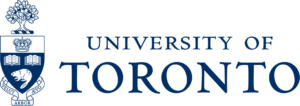This site does not assume that there was a “real” journey of Odysseus, or even a historical Odysseus. Localization of the wanderings deserves attention because 1) the Homeric journey probably, at some level, responds to Greek exploration and colonization in the western Mediterranean; 2) ancient Greek and Roman authors localized the journey variously; 3) peoples of ancient Sicily and Italy often initiated or accepted localization the journey in their lands, motivated by issues of genealogy and cultural authenticity; 4) the recreation of a preceding journey (cf. Aeneid/Odyssey) is a trope of modern travel writing.
Focus is on ancient localization of the hero’s journey, but attention is also given to modern books and theories, both amateur and professional. The front page presents conventional ancient localization of the wanderings of Odysseus, presented in both diagram and map form, with links to sub-pages on each episode. The sources listed there are extensive but not comprehensive; quotations provide key or telling information, but the interested should examine the full passages by following the links provided (both in English translation and the original language).
The “Modern” section coverns theories and travel books of post-antiquity; excluded are (extremely) ‘crackpot’ theories involving places outside of the Mediterranean (including Canada’s Bay of Fundy!). The “Ithaca” section is dedicated to controversy over the “real” Ithaca and locales therein. “Ancient Journeys” surveys modern books inspired by other forms of ancient travel, fictional and historical (Herodotus, March of the Ten Thousand, Alexander the Great, Argonauts, the Appian Way, etc.). “Links” collect relevant online sites or articles, often ephemeral and/or amateur in nature. “Bibliography” lists with brief comments books on the journey of Odysseus, with attention to relevant contexts of colonization, travel, geography, and spatial theory.
Research has been carried out, under the direction of J. S. Burgess, by Hana Carrozza, Maya Chakravorty, Sherwin Chua, Michelle Gabowicz, Sehba Imtiaz, Claudia Ludwig, Laura Mawhinney, Erin McDonald, Michelle Mok, Monali Ray, Chris Thompson-Walsh, Ryan Fontaine, Seth Estrin, Mariapia Pietropaolo, Tim Perry, Vanessa Snyder-Penner, Jennifer Wainberg, and Betel Yibrehu. Thanks are due to Sam Allemang for website design. Support for student research has been provided by the University of Toronto’s Mentorship Program, Research Opportunity Program, and Research Excellence Awards, as well as the Social Sciences and Humanities Research Council of Canada. I am very grateful to all these students and for the funding.
Unless otherwise indicated, photos are by J. Burgess and J. Aspinall.

